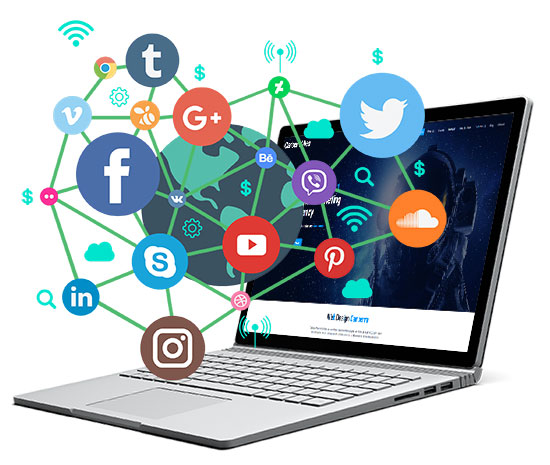뉴스&스피킹(영자신문)
하루 10분이면 영어에 대한 두려움을 극복하고 누구나 유창하게 영어를 구사하실 수 있습니다.
-
 Some Americans Turn to Content Creation for Work In a social media video, American Grace Xu told her 300,000 TikTok followers she was likely to lose her job.
Some Americans Turn to Content Creation for Work In a social media video, American Grace Xu told her 300,000 TikTok followers she was likely to lose her job.
She was right, she tells them in a later video. But she was planning to seek a different career anyway: as a content creator.
“I guess the decision has been made on my behalf,” she tells viewers in the video posted earlier this year. “The universe has spoken.”
U.S. job market
The job market in the United States seems to be holding strong, with employers adding 303,000 workers in March. The jobless rate has remained below four percent for 26 straight months. That is the longest continuous period at that rate since the 1960s.
But the numbers do not necessarily ease worries for thousands of people who have found themselves out of work. Hiring has largely taken place in only a few industries. Technology and finance companies have added just a small number of jobs in the last 12 months.
Some recently jobless Americans, like the 26-year-old Xu, are turning away from traditional employment. Instead they are building a new career path through online content creation. They aim to make money from brand deals and advertising by producing social media videos.
Labor and employment expert Sarah Damaske of Penn State University in Pennsylvania said, “I think most employees look at employers now and no longer think that they are going to find security — permanent security — in a job.”
Damaske added, “I think it makes it less risky to do something like go and be a content creator because employment with a traditional employer is so much riskier.”
In an estimated $250 billion industry, four percent of global content creators make more than $100,000 every year, says Goldman Sachs Research.
YouTube — considered by creators to be one of the best platforms for earning money — has more than 3 million channels in its YouTube Partner Program. A spokesperson said the platform paid producers more than $70 billion in the last three years.
Meanwhile, TikTok — which faces the threat of a U.S. national ban that could hurt the video creation business — has seen a 15 percent growth in user monetization, a company spokesperson said.
Many people turn to full-time content creation only after they have seen good results from putting in the work, said Brooke Erin Duffy, an expert with Cornell University in New York.
Pandemic
The pandemic also changed how U.S. employees consider their work lives. Many seek more control over their schedules and the ability to work from home. In February, nearly 440,000 people applied to start their own businesses — up nearly 50 percent from a monthly 300,000 just before the pandemic, the U.S. Census Bureau says.
Among those who started businesses are content creators, although they likely make up only a small percentage of the total.
For Xu, the pandemic permitted her time to rediscover her hobbies. She started making content at that time as @amazingishgrace on TikTok. She built up a following. Even when she left her banking job to move into the tech field for a better work-life balance, she kept on making content.
Xu lost her job last summer. She said she wondered at the time if she should go to content creation full time. She had a deep fear of ruining things she loved by turning them into work. But the job loss sped up her plans.
“You just have to have this belief that, like, once your life is wide open for something, it will come,” she said, “otherwise you’ll drive yourself crazy thinking about it.”
I’m John Russell.View -
 Near-miss Cyberattack Worries Officials, Tech Industry German software developer Andres Freund was running performance tests last month when he noticed strange behavior in a little-known program. He decided to look into it. What he found frightened those in the software world and drew attention from tech executives and government officials.
Near-miss Cyberattack Worries Officials, Tech Industry German software developer Andres Freund was running performance tests last month when he noticed strange behavior in a little-known program. He decided to look into it. What he found frightened those in the software world and drew attention from tech executives and government officials.
Freund works for Microsoft in California. He discovered that the latest version of the open-source software program XZ Utils had been sabotaged by one of its developers. The action could have created a secret door to millions of servers across the internet.
Freund noticed the change before the latest version of XZ became widely used. His observation, security experts say, helped save the world from a digital security crisis
The near-miss has re-centered attention on the safety of open-source software. Open-source software is free. Volunteers often maintain the programs. Their openness means they serve as the foundation for the internet economy.
Many such projects depend on a small number of unpaid volunteers working on fixes and improvements.
XZ is a collection of file compression tools for the Linux operating system. It was long maintained by a single person, Lasse Collin.
But in a message published in June 2022, Collin said he was dealing with mental health issues. He suggested he was working privately with a new developer named Jia Tan.
Update logs available through the open-source software site Github show that Tan’s role quickly expanded. By 2023 the logs show Tan was using his code in XZ. It is a sign that he had won a trusted role in the project.
But cybersecurity experts who have studied the logs say that Tan was only acting like a helpful volunteer. Over the next few months, they say, Tan introduced a nearly invisible backdoor into XZ.
Tan did not return messages sent to his email account. Reuters has been unable to find out who Tan is, where he is, or who he was working for. But many people who have examined his updates believe Tan is a pseudonym for an expert hacker or a group of hackers. Experts say Tan was likely working for a powerful intelligence service.
Tan could easily have gotten away with the actions if Freund had not noticed something unusual. He noticed the latest version of XZ sometimes using an unexpected amount of processing power on the system he was testing.
Microsoft did not make Freund available for an interview. But in publicly available emails and posts to social media, Freund said a series of easy-to-miss clues led him to discover the backdoor.
The find “really required a lot of coincidences,” Freund said on the social network Mastodon.
Among those in the open-source community, the discovery has been concerning. The volunteers who maintain the software that supports the internet are used to the idea of little pay or recognition. But the idea that they were now being hunted by well-resourced spies pretending to be volunteers was “incredibly intimidating,” said Omkhar Arasaratnam. He is with the Open Source Security Foundation.
For government officials, the incident has raised concerns about how to protect open-source software. Assistant National Cyber Director Anjana Rajan told the online news organization Politico that “there’s a lot of conversations that we need to have about what we do next” to protect open-source code.
Whatever the solution, almost everyone agrees the XZ incident shows that something must change.
“We got unreasonably lucky here,” said Freund in another Mastodon post. “We can't just bank on that going forward.”
Dan Novak adapted this story for VOA Learning English based on reporting from Reuters.View -
 Where Will China Sell Its Electric Cars, Solar Panels? China can produce and sell a lot of very low-cost electric vehicles and solar panels.
Where Will China Sell Its Electric Cars, Solar Panels? China can produce and sell a lot of very low-cost electric vehicles and solar panels.
This worries the U.S. Treasury Department, President Joe Biden and opposition candidate and former President Donald Trump.
U.S. Treasury Secretary Janet Yellen recently brought attention to the abundance of products such as car batteries and solar panels from China. She said they are exported at “artificially depressed” prices because of low labor costs and government support.
Trump spoke at a political gathering late in March in Ohio. He said the U.S. needs to do something about the possibility of China’s electric cars entering North America through Mexico. He said it could be a “bloodbath,” or a huge defeat, for the U.S. auto industry if that happens.
The International Energy Agency in Paris said China accounts for 60 percent of electric vehicle sales around the world. China also produces 10 million more electric cars each year than it can sell within its own borders. That means China needs to find a way to sell the cars overseas.
Eswar Prasad is an economist at Cornell University in the state of New York. He said China will aim to export products such as cars, steel, batteries, and solar panels if its economy does not improve.
American officials have been concerned about China’s extra capacity for a long time. Speaking recently on a trip to China, Yellen talked about Suniva, a solar panel company in Georgia. It was forced to shut down at one point because it could not compete with low-cost products from China.
“It is important that this doesn’t happen again,” she said.
Suniva closed in 2017. It re-opened after getting financial support from the Inflation Reduction Act passed by Congress in 2022.
Steel and aluminum imports from China sharply increased after the 2008-2009 global financial crisis. In 2017, Donald Trump’s administration put tariffs in place that turned American buyers away from those Chinese imports. Biden has kept the tariffs in place.
Brad Setser is with the Council on Foreign Relations and a former Treasury Department official. He said that China’s overcapacity in solar cells, batteries and now electric cars is “insane.”
China notes that the U.S. also offers incentives to both businesses and people who want to purchase electric cars or solar panels. China said some of the financial aid being offered to U.S. car buyers is a violation of World Trade Organization rules.
However, an international trade research group studied the issue. The Center for Strategic and International Studies in Washington, D.C. found that the financial aid China was offering its “green” industry in 2019 was more than double the amount of support coming from the U.S. government to its industries in all forms.
Both Prasad and Setser noted that while China is supporting industry, it offers few incentives to citizens to purchase Chinese goods. That leads to overcapacity.
What happens next?
The two sides have agreed to discuss the problem. China says its less costly “green” products will help the world so the U.S. should not oppose them. But China also notes that its overcapacity and lack of consumer spending is a problem if it wants to keep its economy growing.
One China expert said another concern should be policies that place too much importance on one or two industries. Huang Hanquan is an expert on industrial policy. He said China should coordinate the development of new technologies so that every province does not aim to develop the same industries.
Speaking in China, Yellen said there should be protections, so the U.S. market is not flooded with low-cost Chinese products. “I think the Chinese realize how concerned we are about the implications of their industrial strategy,” she said, adding, “I think they have heard that this is an important issue to us.”
I’m Dan Friedell.View -
 Study Aims to Find Out Why Some People Are Left-handed What do Lady Gaga, Barack Obama, and Bill Gates have in common – aside from their fame? They are all left-handed.
Study Aims to Find Out Why Some People Are Left-handed What do Lady Gaga, Barack Obama, and Bill Gates have in common – aside from their fame? They are all left-handed.
But why are 10 percent of people left-handed while most are right-handed?
Researchers are trying to find out.
A recent study identified a genetic cause of left-handedness in some people. Researchers found rare variants of a gene involved in controlling the shape of cells. They found the variants to be 2.7 times more common in left-handed people.
These genetic variants account for possibly 0.1 percent of left-handedness. But the researchers said a gene, called TUBB4B, might play a part in the development of brain asymmetry.
In most people, the two halves, or hemispheres, of the brain have slightly different structures and are dominant for different activities.
"For example, most people have left-hemisphere dominance for language, and right-hemisphere dominance for tasks that require directing visual attention to a location in space," said Clyde Francks of the Max Planck Institute for Psycholinguistics in the Netherlands. Francks was the top writer of the study published recently in Nature Communications.
Francks suggested that for most people, the left side of the brain controls the dominant right hand. "The nerve fibers cross from left-to-right in the lower part of the brain,” Francks said. He added, “In left-handers, the right hemisphere is in control of the dominant hand. The question is: what causes the asymmetry of the brain to develop differently in left-handers?"
TUBB4B controls a protein that gets formed into filaments called microtubules. These microtubules give structure to the insides of cells. The changes in TUBB4B that are more common in left-handers suggest that microtubules are involved in setting up the brain's normal asymmetries, Francks said.
The two brain hemispheres start to develop differently in the human embryo. Scientists do not know the mechanism that controls this.
"Rare genetic variants in just a handful of people can pinpoint genes that give clues to developmental mechanisms of brain asymmetry in everyone," Francks added. TUBB4B is an example.
The study’s findings were based on genetic data from more than 350,000 middle-aged to older adults in Britain. It was from the UK Biobank. About 11 percent of the people involved were left-handed.
For most people, left- or right-handedness might come down to chance. Changes in the levels of some molecules during important times of brain development could influence it, Francks suggested.
Historically, many cultures disapproved of left-handedness and forced people to become right-handed.
In English, the word "right" also means "correct" or "proper." And the expression a "left-handed compliment" means that a comment might seem nice but is an insult.
The levels of left-handedness differ around the world, with lower rates in Africa, Asia and the Middle East compared to Europe and North America, Francks said.
"This likely reflects suppression of left-handedness in some cultures - making left-handed kids switch to right-handedness, which also used to happen in Europe and North America," Francks added.
The new findings might have use in the field of mental health. People with schizophrenia are around twice as likely to be left-handed or ambidextrous. People with autism are around three times as likely, Francks said.
He observed that genes involved in developing the brain in early life might be involved in brain asymmetry and mental health.
"Our study found suggestive evidence of this, and we have also seen it in previous studies where we looked at more common genetic variants in the population," Francks added.
I’m John Russell.View -
 The Pearl of Ukraine Editor's note: This story is one of the winning entries from the "Teach Us about Ukraine" writing contest sponsored by VOA Learning English and GoGlobal.
The Pearl of Ukraine Editor's note: This story is one of the winning entries from the "Teach Us about Ukraine" writing contest sponsored by VOA Learning English and GoGlobal.
My name is Zhanna Kravchenko. I teach at Specialized General Education School No. 7. This is my essay.
Lviv is often referred to as the "Pearl of Ukraine."
The largest city in western Ukraine is home to more than 700,000 people. Founded in the 13th century, its cobblestone streets are not only picturesque but also filled with history.
The city was founded by Prince Danylo Romanovych of Galicia and named after his son, Lev. Galicia is now an area divided between Ukraine and Poland.
For more than 400 years, Lviv was a part of the Kingdom of Poland. In 1569, the Act of Union of Lublin connected Poland and the Grand Duchy of Lithuania. The measure led to the creation of the Polish-Lithuanian Commonwealth, one of the largest and most influential states in Europe. Lviv, with its central location, became a thriving cultural and economic center of the commonwealth.
Following the partition of the commonwealth in 1772, Lviv and the surrounding area of Galicia became a part of the Austro-Hungarian Empire. This era brought Central European influences to Lviv's culture and architecture. The beautiful Lviv Opera House is such an example.
The 20th century was a time of turmoil for the city. Lviv became a part of Poland again after Austria's defeat in World War I. The West Ukrainian People’s Republic started a short-lived independence movement. The Soviet Union seized the city in 1939. Nazi Germany occupied the city during World War II. And the Soviets annexed the city in 1945.
The official Lviv tourism website says Ukrainian insurgents fought against the Soviets until the late 1950s. Tens of thousands of Ukrainians from the area were sent to concentration camps and exiled to Siberia.
In more recent history, Lviv played an important role during Ukraine's struggle for independence. The Orange Revolution in 2004 saw the city's central square, Rynok, filled with people calling for democratic change. The events that unfolded there helped shape the course of modern Ukrainian politics, solidifying the city's reputation as a stronghold of pro-European sentiment.
Beyond its historical significance, Lviv offers a tapestry of cultural delights. The city boasts a thriving arts scene, with numerous theaters, galleries, and music venues. It is a city where literature and poetry find their voice, celebrated yearly during the Lviv Publishers' Forum.
One cannot talk about Lviv's culture without savoring its culinary treasures. The aroma of freshly brewed coffee wafts through the air as you explore its charming cafes. Ukraine's coffee culture is deeply rooted here, with the first coffeehouse in the country opening its doors in Lviv in the 18th century.
But perhaps the most enduring aspect of Lviv's charm is its people. Warm, welcoming, and proud of their heritage, Lvivians have a way of making visitors feel like they have found a second home. Their passion for the city is infectious and they are always eager to share its stories with visitors.
From the picturesque rooftops to the cobblestone streets, Lviv is a city where history whispers from every building, city square, and street corner. For those who seek to understand Ukraine, Lviv is an open book, inviting you to explore its pages and discover the beauty within.
I'm Gena Bennett.View

